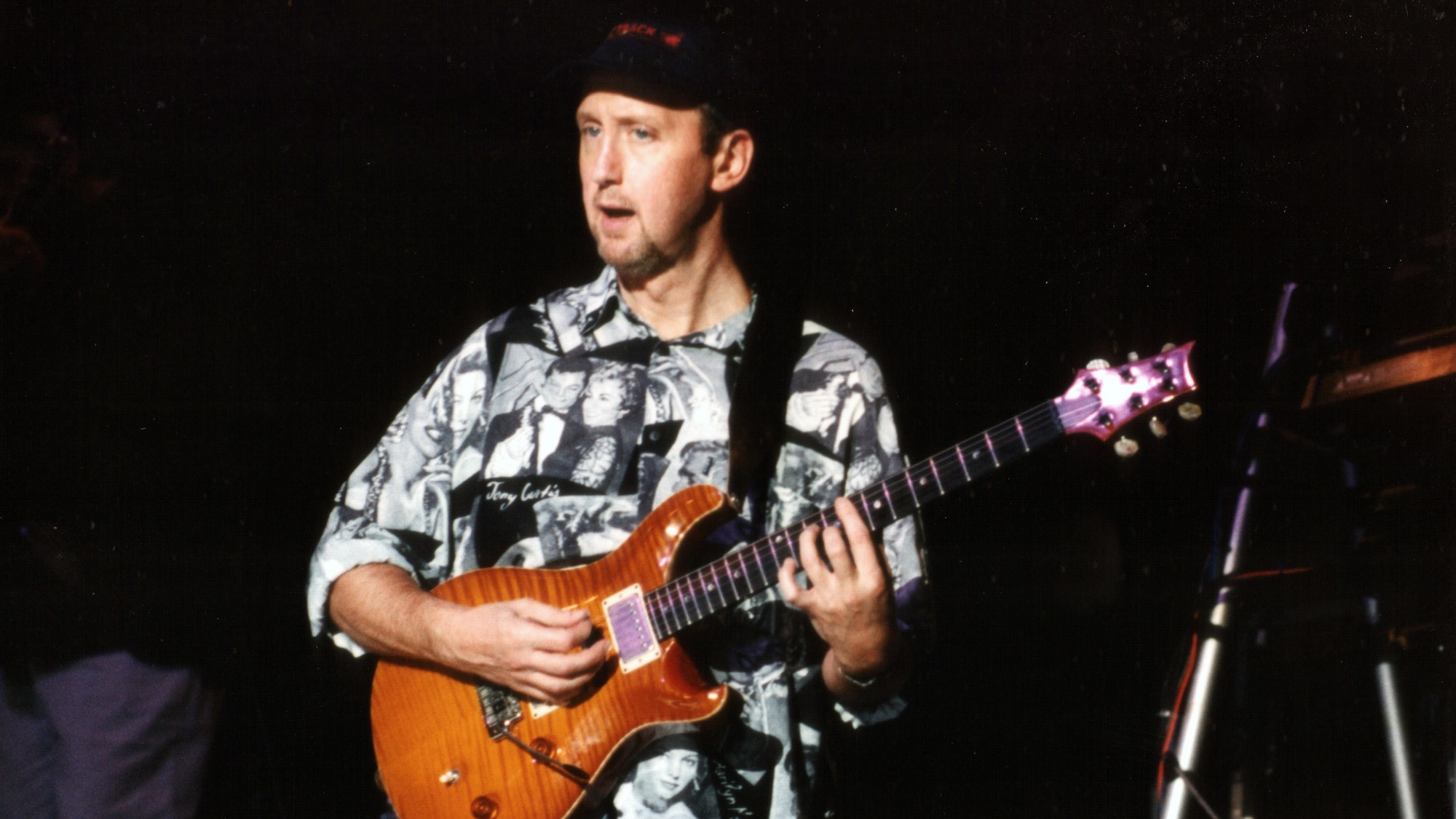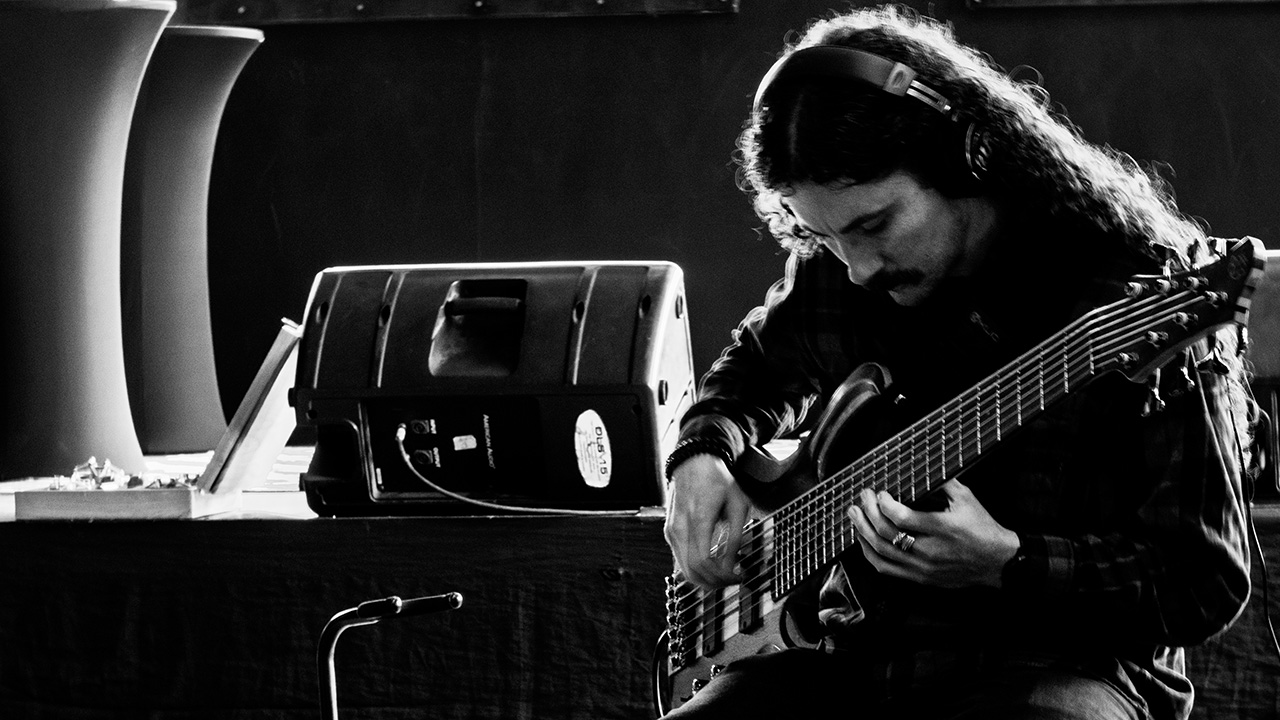“The Bulls loved it immediately. Michael Jordan loved it”: He appeared on smash hits by Kate Bush and Paul McCartney, but this unsung session guitar hero's most popular solo can be heard in one of the most iconic sports anthems of all time
The late Ian Bairnson spent decades as a first-call session man, but his most famous turn came on the Alan Parsons Project tune Sirius

Ian Bairnson is one of those session guitar greats whose name may not ring a bell, but whose playing is nothing short of ubiquitous.
Bairnson – who sadly passed away last April – played a dazzling guitar solo on Kate Bush's groundbreaking hit, Wuthering Heights, lent electric guitar work to albums by Kenny Rogers and Tom Jones, served as a live guitarist for Sting and Stanley Clarke, and even appeared on Paul McCartney's chart-topping Mull of Kintyre (on backing vocals).
In terms of ears reached, though, nothing in that impressive discography holds a candle to Sirius, the epic instrumental that opened the Alan Parsons Project's 1982 album, Eye in the Sky.
Already the intro to a successful album, Sirius began its journey to immortality in the mid-'80s, when it became the walk-on theme for the Chicago Bulls and their budding superstar, Michael Jordan. From there, it spread quickly – eventually seeing use not only by the Bulls, but in countless other stadiums and arenas around the world.
Sirius began life as a simple riff played on Parsons' Fairlight synthesizer – with a touch of artificial echo. Though that figure is instantly identifiable, and certainly builds anticipation, the payoff comes when Bairnson charges in with a simple but thundering three-chord motif, perfectly playing off the ping-ponging synths with brute rock crunch.
Ian was always ready to play a stylistically perfect solo for every track he was involved with
Alan Parsons
From there, Bairnson takes flight, showcasing his vibrato and phrasing with a very Gilmour-esque eight-bar lead break. Not the worst guitarist to emulate, given that Parsons served as the engineer on Pink Floyd's 1973 opus, The Dark Side of the Moon.
Though Parsons was the main musical director for his namesake project, he says that Bairnson needed little direction on Sirius, or any other tune, really.
All the latest guitar news, interviews, lessons, reviews, deals and more, direct to your inbox!
“Ian was always ready to play a stylistically perfect solo for every track he was involved with,” Parsons tells Guitar World. “The usual process was he would just play it through a few times and I would give him vague directions like ‘Let’s try it starting low and working upwards’ or ‘Let’s try it simpler – less notes.’”
Bairnson's playing on the brief tune is always tasteful and rich with melody (not always a given in the shred-minded '80s), but still incredibly muscular. You can see Bairnson – armed with his favorite 1973 Gibson Les Paul Custom – nail the solo below, making just as big a statement with his fretwork as the fireworks and laser show that accompany the band.
“It was a classic solo which has always been played note for note at every live show, whether it was Ian himself or other players I have performed with in concert,” Parsons says, “it simply cannot be improved upon.”
Given much of its strength and drama by Bairnson, Sirius became synonymous with the Bulls, and their domination of the NBA in the 1990s. Indeed, the scene of Michael Jordan, Dennis Rodman, Scottie Pippen, and co. running onto the court as the instrumental blared became an integral part of the team's intimidating image.
Featured prominently in the Emmy-winning, much-viewed 2020 Bulls documentary The Last Dance, Sirius has now taken on a new life with a younger audience, even graduating to TikTok meme status.
It was Bulls public address announcer Tommy Edwards – who had prior experience as a DJ – who first thought to utilize the drama and explosive dynamics of Sirius after hearing it at a local movie theater.
“I told [Edwards' wife] Mary Lou, ‘I know this song. It’s Sirius by the Alan Parsons Project,” Edwards recalled to NBC Sports Chicago in 2019. “The more I listened to it, I’m thinking, ‘Wait a minute. This could be the Bulls’ song.’”
The effect of the rising team's powerful new theme was immediate.
“Because it has so many great parts to its intro – a new guitar part or crescendo – it worked great. The Bulls loved it immediately. Michael Jordan loved it. That’s been the opening lineup music ever since.”
Jackson is an Associate Editor at GuitarWorld.com. He’s been writing and editing stories about new gear, technique and guitar-driven music both old and new since 2014, and has also written extensively on the same topics for Guitar Player. Elsewhere, his album reviews and essays have appeared in Louder and Unrecorded. Though open to music of all kinds, his greatest love has always been indie, and everything that falls under its massive umbrella. To that end, you can find him on Twitter crowing about whatever great new guitar band you need to drop everything to hear right now.

